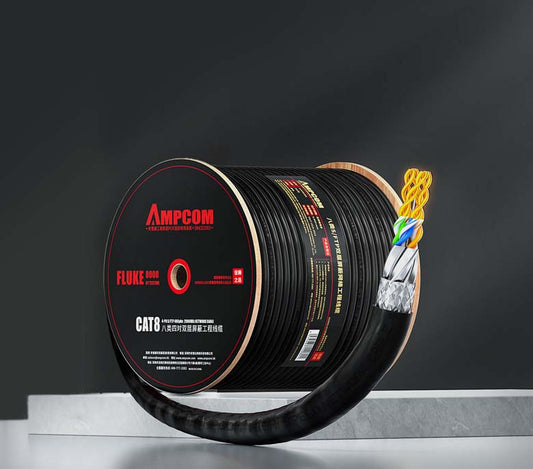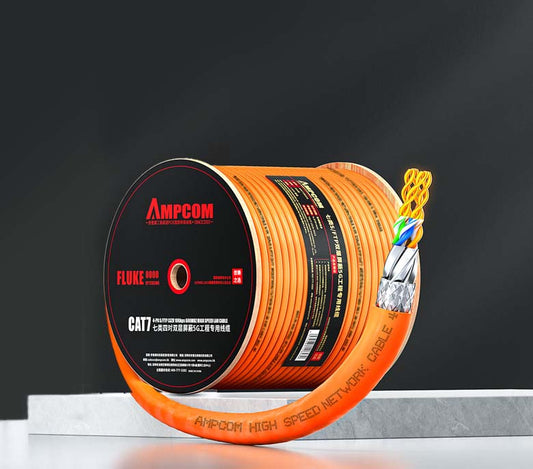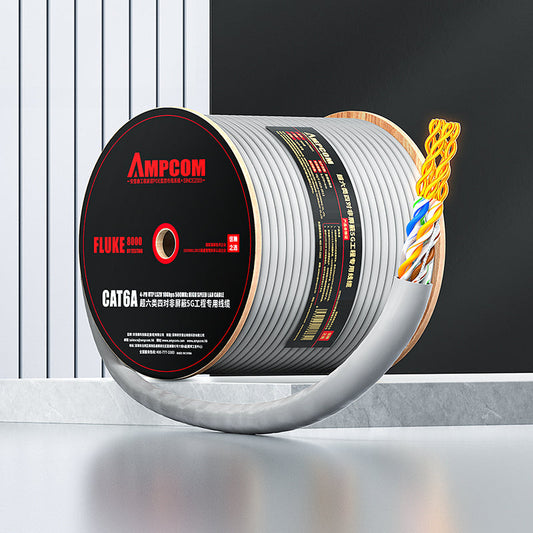28AWG Slim Patch Cords: Thermal & PoE Trade-offs Explained
Introduction
As modern networks continue to demand higher density and flexibility, 28AWG slim patch cords have become increasingly popular in data centers and enterprise environments. These ultra-thin cables save valuable rack space, improve airflow, and simplify cable management. However, when it comes to Power over Ethernet (PoE) and thermal performance, 28AWG patch cords introduce important trade-offs that installers and network engineers must understand.
This article explores how 28AWG patch cords perform under PoE loads, how they handle heat dissipation, and the best practices for balancing space efficiency with safe and reliable power delivery.
What is 28AWG and Why It Matters
The term AWG (American Wire Gauge) refers to the thickness of a wire. The smaller the number, the thicker the conductor. Standard Ethernet patch cords, such as Cat6 or Cat6a, typically use 24AWG or 26AWG wire. By comparison, a 28AWG slim patch cord uses a much thinner conductor—about 40% smaller in diameter.
This reduction in thickness provides key benefits for modern network environments:
- Improved cable management — Thinner cables are easier to route in high-density racks.
- Better airflow — Reduced cable bulk enhances cooling efficiency in data centers.
- Higher density connections — Ideal for racks and patch panels with limited space.
However, this smaller wire gauge affects both electrical resistance and thermal performance, especially when delivering power over Ethernet.
Understanding PoE and Power Delivery Limits
Power over Ethernet (PoE) technology allows both data and power to be delivered over the same Ethernet cable. There are several PoE standards defined by IEEE:
- PoE (IEEE 802.3af): up to 15.4W
- PoE+ (IEEE 802.3at): up to 30W
- PoE++ (IEEE 802.3bt Type 3): up to 60W
- PoE++ (IEEE 802.3bt Type 4): up to 90W
While a 28AWG cable can technically deliver PoE, the thinner conductor has higher electrical resistance. This means more voltage is lost as heat over distance, especially under higher PoE loads such as PoE+ or PoE++.
In other words, the smaller the wire, the more it resists current flow — and the more heat it produces. This can limit the effective distance and safety margin for high-power applications.
Thermal Considerations and Heat Buildup
One of the primary trade-offs when using 28AWG slim patch cords is thermal buildup. The thinner wire has less surface area for heat dissipation, which can cause the cable temperature to rise under load.
In high-density cable bundles, this heat can accumulate, potentially exceeding the temperature limits specified in industry standards such as ANSI/TIA-568.2-D and ISO/IEC 11801. Excessive temperature increases can degrade signal quality, cause long-term damage to insulation, and reduce cable lifespan.
When installing 28AWG patch cords in environments using PoE++ (90W), careful thermal management becomes critical. It’s recommended to avoid tightly bundling large groups of cables carrying PoE power and to ensure proper ventilation within racks or cabinets.
Recommended Use Cases for 28AWG Cables
28AWG patch cords are best suited for applications where space efficiency and flexibility outweigh the need for long-distance power delivery. Common use cases include:
- Short connections between patch panels and switches in data centers
- Top-of-rack (ToR) and end-of-row (EoR) configurations
- Office networks with limited PoE power loads
- High-density network racks and modular cabinets
For installations requiring longer cable runs or higher PoE power (such as IP cameras or access points drawing 60–90W), it is safer to use thicker 24AWG or 26AWG cables to minimize voltage drop and heat buildup.
Performance Comparison: 28AWG vs. 24AWG
| Parameter | 28AWG Slim Patch Cord | 24AWG Standard Patch Cord |
|---|---|---|
| Diameter | ~0.32mm | ~0.51mm |
| Resistance | Higher (more voltage loss) | Lower (better power delivery) |
| Heat Dissipation | Limited in large bundles | Better thermal control |
| Flexibility | Excellent | Moderate |
| Recommended Length | Up to 10 meters (PoE-dependent) | Up to 100 meters |
Installation Tips and Best Practices
- Use 28AWG patch cords only for short connections in racks or panels, not for long backbone links.
- Ensure adequate ventilation to prevent heat accumulation, especially when running PoE++ power.
- Label cables and organize them neatly in cable management systems to avoid tight bundling.
- For PoE devices requiring 60W or higher, prefer 24AWG or 26AWG cables for stable power delivery.
- Always verify cable compliance with UL and TIA standards for temperature and PoE rating.
Following these practices will help you get the most out of 28AWG slim patch cords without compromising safety or performance.
Conclusion
28AWG slim patch cords offer an elegant solution for space-constrained environments where flexibility, organization, and airflow are priorities. However, due to their higher resistance and limited heat dissipation, they are best used in low- to moderate-power PoE applications and short-distance runs.
For optimal performance, always balance density with thermal safety and verify cable suitability for your PoE class. When properly implemented, 28AWG cables can enhance efficiency and aesthetics in modern network installations.
Further reading: Ultra-Slim Cat6a 28AWG, PoE Power Budget & Voltage Drop, and Cable Length & Performance.
FAQ Section
- Can 28AWG cables handle PoE++ (90W)?
- While 28AWG cables can carry PoE++ power, they generate more heat and experience higher voltage drop than thicker cables. Use them only for short runs and ensure adequate ventilation.
- What is the maximum length for 28AWG patch cords?
- Typically, 28AWG patch cords are recommended for lengths under 10 meters, especially in PoE environments, due to higher resistance and potential heat buildup.
- Are 28AWG cables suitable for data centers?
- Yes, 28AWG slim patch cords are ideal for data centers with high port density and short connections, helping to improve airflow and cable management.
- Do thinner cables affect signal quality?
- No, for short distances, 28AWG cables maintain excellent signal integrity. However, longer runs may experience increased insertion loss, so they’re best for short patching applications.



